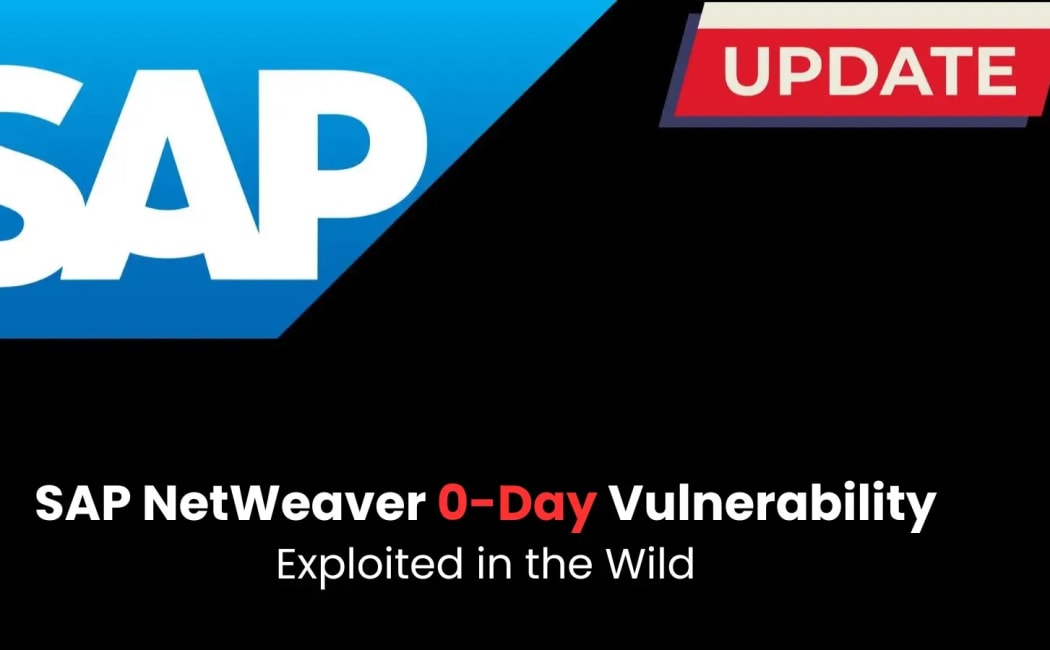NCERT Issues Red Alert: SAP NetWeaver Zero-Day Vulnerabilities Pose Global Threat

NCERT Issues Red Alert on SAP NetWeaver Vulnerabilities
Islamabad: The National Computer Emergency Response Team (NCERT) has sounded a red alert after detecting multiple zero-day vulnerabilities in SAP NetWeaver, a mission-critical enterprise application framework widely used across banking, telecom, government, and manufacturing sectors.
According to cybersecurity experts, these flaws could allow unauthenticated attackers to execute remote code, install malware, bypass authentication systems, and potentially seize complete control of enterprise servers. If left unpatched, organizations risk data theft, ransomware attacks, and large-scale breaches with devastating financial and operational consequences.
Critical CVEs Identified
NCERT identified three major vulnerabilities in SAP NetWeaver, with one marked at the maximum CVSS score of 10.0. Each presents unique risks, ranging from remote code execution to privilege escalation.
| CVE ID | Severity (CVSS) | Risk Description |
|---|---|---|
| CVE-2025-42944 | 10.0 (Critical) | Remote code execution via RMI-P4 module, enabling system-level command execution without authentication. |
| CVE-2025-42922 | 9.9 (High) | Insecure file uploads allowing malware injection and deployment. |
| CVE-2025-42958 | 9.1 (High) | Authentication bypass leading to privilege escalation and full system compromise. |
Why This Matters
SAP NetWeaver forms the core backbone of enterprise IT infrastructure, powering mission-critical applications in financial institutions, telecom networks, supply chains, and government systems.
A successful exploit could enable attackers to deploy ransomware across entire networks, steal sensitive data such as customer records and trade secrets, or even halt operations of essential services. With global enterprises dependent on SAP, these vulnerabilities represent a severe cybersecurity risk with potentially international repercussions.
NCERT’s Official Warning
“These vulnerabilities pose a severe risk of complete enterprise system takeover. Organizations must patch immediately.” – National CERT
Immediate Actions Recommended
NCERT has issued urgent mitigation steps for organizations running SAP NetWeaver:
- Apply SAP’s September 9, 2025 security patches (Notes 3643501, 3643865, 3642961).
- Restrict access to RMI-P4 and Web Service modules to trusted IPs only.
- Enforce strict network segmentation for enterprise servers.
- Monitor logs for suspicious uploads or command executions.
- Implement firewall restrictions and disable unnecessary file upload features.
- Rotate privileged credentials and validate secure backups.
- Run full vulnerability scans to detect possible compromises.
Potential Impact if Unpatched
If enterprises delay applying these patches, attackers could exploit these flaws to launch:
- Ransomware campaigns – encrypting entire corporate networks until ransom is paid.
- Massive data breaches – leaking confidential financial or customer data.
- System-wide takeovers – giving hackers complete remote control over enterprise IT systems.
- Supply chain attacks – targeting downstream partners and clients via compromised SAP servers.
Global Cybersecurity Implications
These vulnerabilities highlight the urgent need for proactive cybersecurity across enterprises worldwide. With attackers increasingly targeting enterprise resource planning (ERP) systems, zero-day exploits like these can quickly escalate into global incidents.
Cybersecurity professionals stress that ERP systems are high-value targets, given the sensitive financial and operational data they store. Threat actors, including state-sponsored groups, could weaponize these vulnerabilities to disrupt global trade, banking, and government operations.
Conclusion
The NCERT red alert serves as a wake-up call for enterprises running SAP NetWeaver. Organizations must treat this as a top-priority security incident and immediately deploy SAP’s recommended patches while implementing additional safeguards.
In an age where cybersecurity threats are escalating daily, staying ahead of attackers requires rapid response, strong defense mechanisms, and continuous monitoring. Failure to act could lead to catastrophic breaches that may not only cost millions in damages but also disrupt critical services across industries.
